How to Draw a Body: Beginner's Guide for Digital Art Enthusiasts
For digital artists and painting enthusiasts, accurately capturing the structure and proportions of the human body is a key skill.
In this tutorial, we will start from the basics of drawing the human body and explore how to depict correct body proportions and unique physical features.
By mastering these techniques, you will be able to infuse your artwork with a more lively and natural effect, making your digital art pieces stand out.
Let's embark on this exciting journey of unraveling the mysteries of the human body drawing together!

In this article, you will learn:
- Key Joints of the Human Body
- Proportions of the Human Body
- Differences Between Male and Female Body
- How to Draw Different Parts of the Human Body?
- How to Understand Spatial Relationships in Body Drawing?
- How to Draw the Human Body Digitally?
Key Joints of the Human Body
An adult human skeleton is comprised of 206 bones connected by ligaments and joints. The skeletal system can be broadly divided into four parts: the head, shoulders, trunk, and limbs.
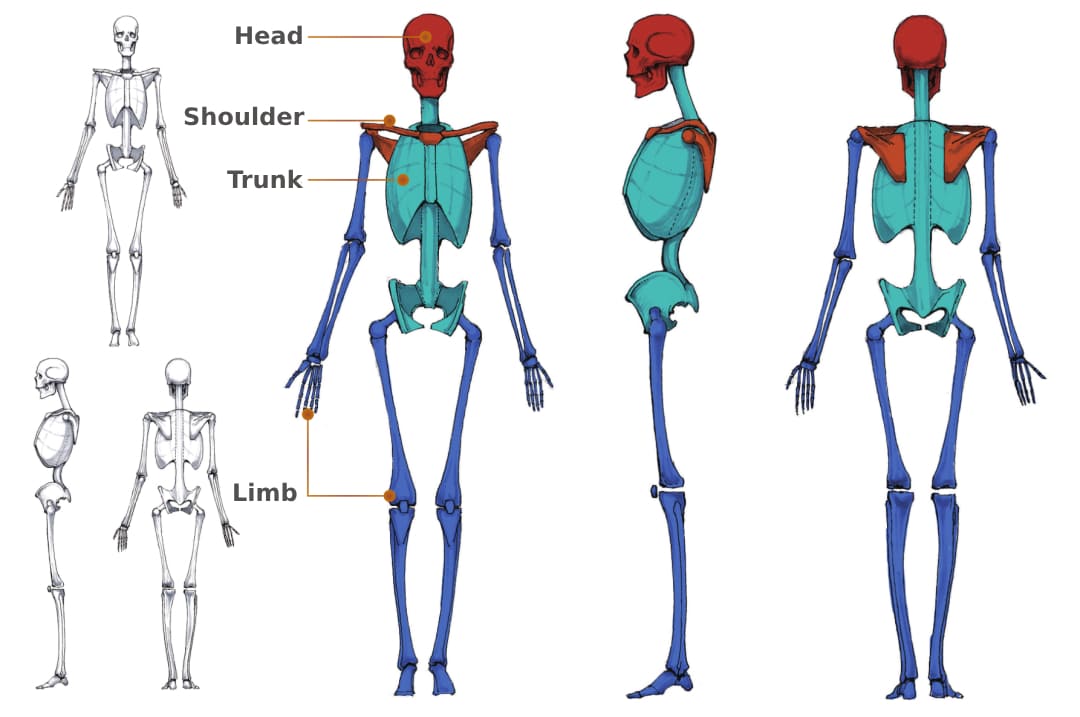
Every movement in the human body originates from the rotation of corresponding key joints. The body's skeleton is a network of many movable joints.
Simply put, these key joints can be categorized into four major points (the shoulders and hips on both sides of the body) and eight minor points (the wrists, elbows, knees, and ankles on both sides of the body). These joints are crucial for movement.

When practicing drawing, understanding these key joints helps you grasp the patterns of skeletal changes during motion.
For beginners, observing before practicing is the best approach to drawing. Take time to study the proportions and characteristics of the human skeleton, then capture them through drawing.
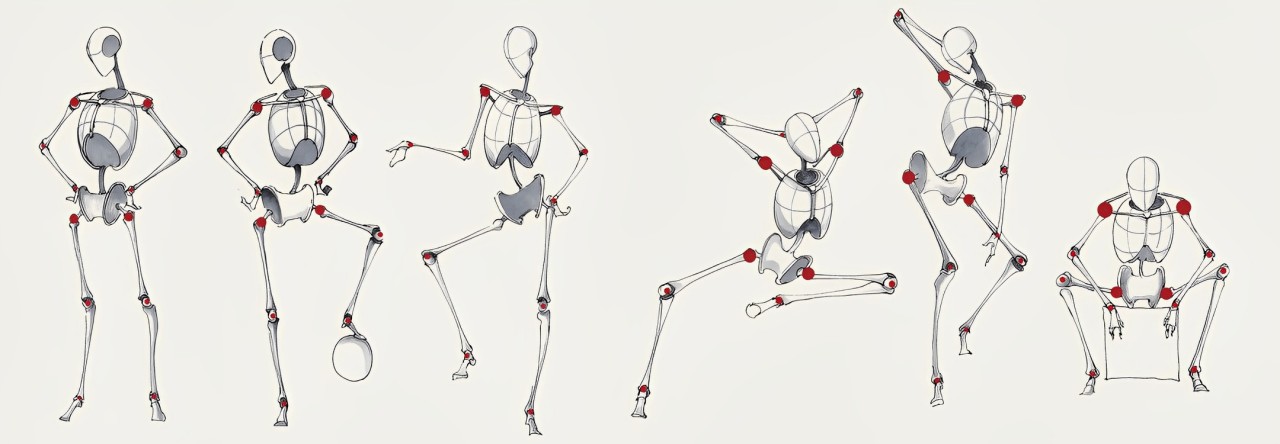
Proportions of the Human Body
The proportions of the human body can be simplified into the following formulas:
- Length of upper body = Length of lower body
- Length of head + Length of neck = Length of sternum = Length of lumbar vertebrae + Length of pelvis
- Length of thigh = Length of calf
The above formulas can be used as a reference. However, in anime character design, exaggeration and distortion are often employed to depict the proportions of characters more perfectly.
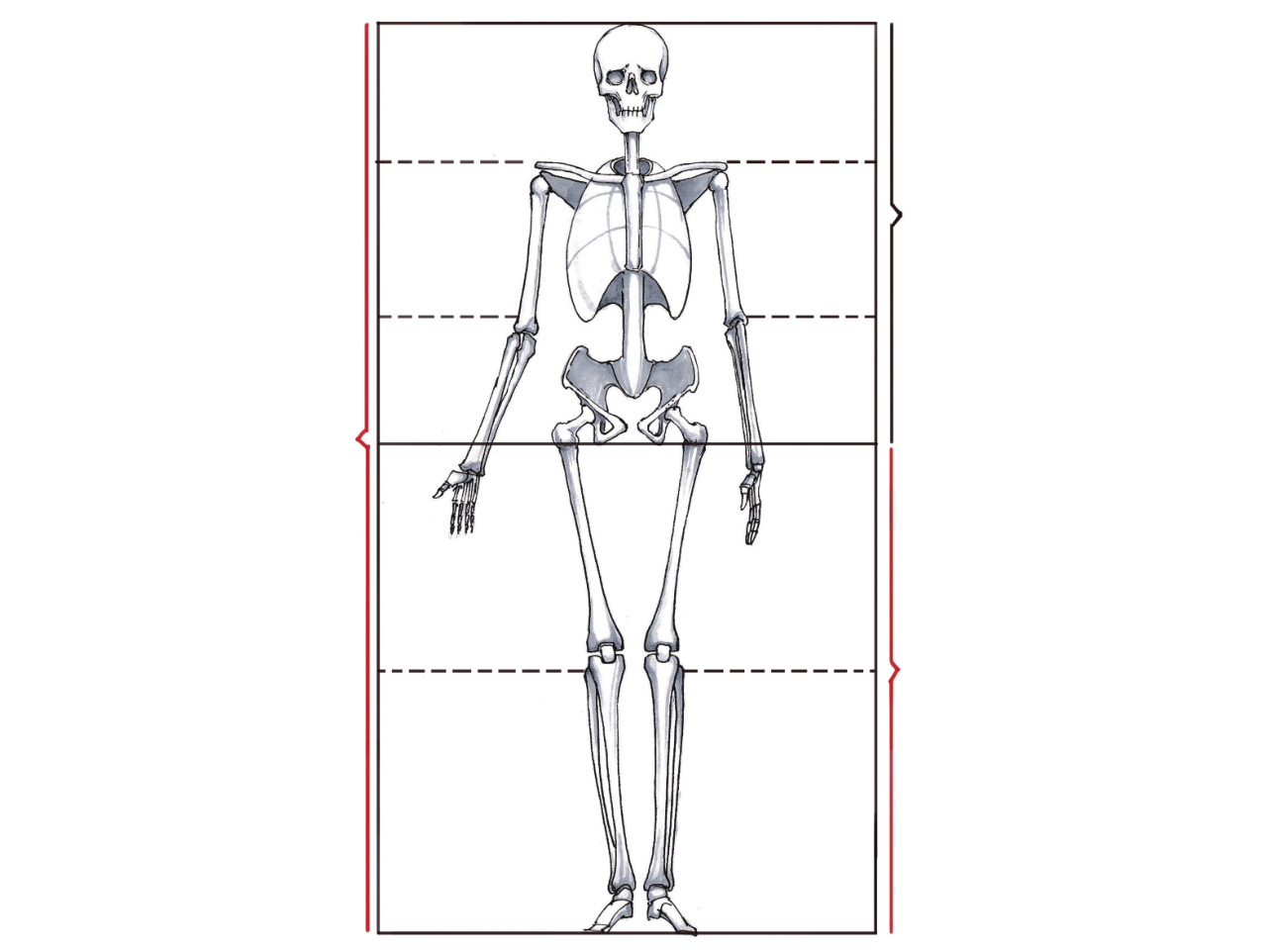
Body proportions are not absolute. As individuals age, bones undergo changes, but the relative positions remain constant. During growth periods, the main changes in bone structure involve the hips rising and the limbs elongating.
Between the ages of 2 and 25, human skeletal proportions continually change as individuals grow taller and stronger, stabilizing around the age of 25. After 45, various functions of the body start to decline, joints in the skeleton deteriorate, and the spine may experience some compression.
As shown in the image below, the evolution of human body proportions resembles a parabolic curve.

When drawing anime characters, you can use different skeletal proportions for characters of varying ages to evoke different feelings. For example, chibi characters may be drawn using proportions resembling those of 2 to 4-year-olds, creating a cute appearance.
Differences Between Male and Female Body
Many beginners find it challenging to show the distinctions between male and female characters in drawings. However, these differences can actually be reflected through changes in the skeletal structure.
While the skeletal proportions of males and females are generally similar, there are some variations in the structure of the skull and torso.
1. Variations in Skull Structure
- Male skulls typically have more prominent angles, with a pronounced brow ridge (highlighted in red) and wider upper and lower jaws.
- Female skulls have less pronounced angles, with a prominent forehead ridge (highlighted in blue) and slightly smaller upper and lower jaws.
Male skulls can appear more square-shaped, while female skulls tend to be more rounded. When creating anime characters, emphasizing these features can make them more distinctive.

2. Differences in Shoulders and Pelvis Between Genders
Apart from the skull, the differences in body shape between males and females also extend to the pelvis and shoulders. Due to different physiological structures, females have wider pelvises, while males have broader shoulders.
When drawing, males can be portrayed as more muscular, and females as more delicate. A handy tip is that males have broad shoulders and narrow hips, while females have narrow shoulders and wider hips.
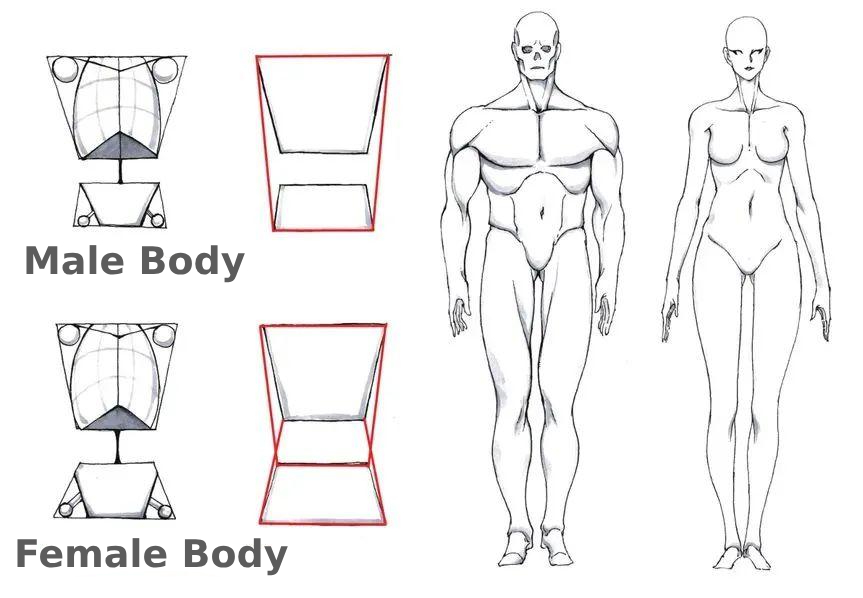
How to Draw Different Parts of the Human Body?
The human body is a fascinating thing, with each part having its own unique characteristics. If you fail to capture these features while drawing, it can make the human figure look quite unnatural.
For beginners sketching dynamic human figures, paying close attention to the distinctive features of key body parts is crucial. As the body assumes different poses, there are subtle changes that occur.
So, how can you grasp the unique features of these body parts to make your drawings more lifelike?
1. Characteristics of the Head
The main moving part of the skull is the jawbone. The jawbone forms a movable connection with the skull, allowing for up-and-down and side-to-side movements. This becomes evident during activities like speaking, shouting, and biting.
Further Reading:
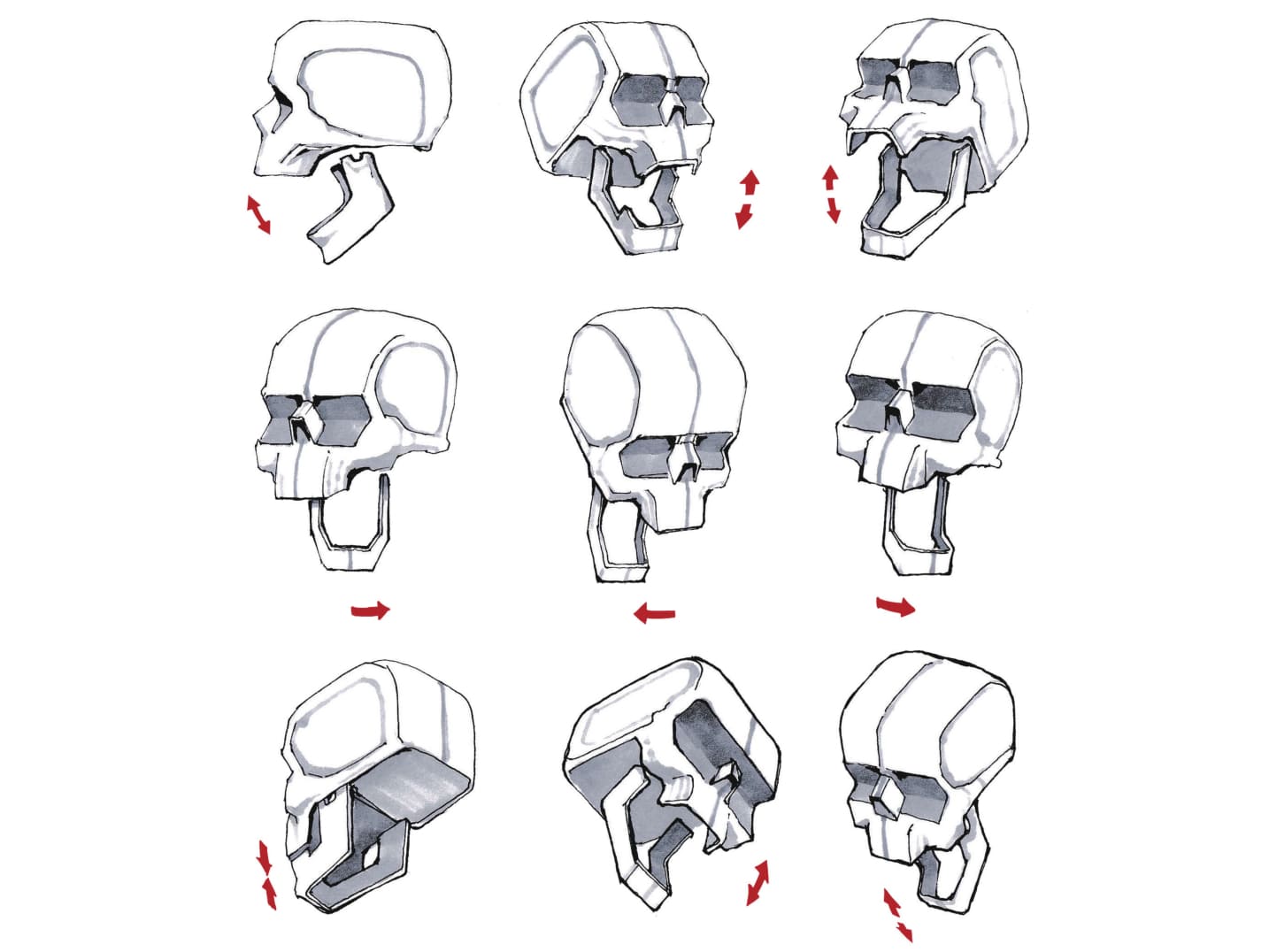
2. Characteristics of the Shoulders
When the arms of the body are in motion, the shoulder blades move along with them.
For instance, when both arms are raised, the shoulder blades lift upward; when the arms extend forward, the shoulder blades move forward; when the arms press back, the shoulder blades move backward.
The shoulder blades on each side can move independently. When only one arm is raised, only the shoulder blade on that side will lift up.

3. Characteristics of the Torso
You can think of the torso as two blocks. This perspective helps you feel the twisting direction of the torso, aiding in drawing the shape of the torso in motion.

4. Characteristics of the Limbs
When drawing the limbs of the human body, there are several key points to keep in mind:
- Proportion and Structure: The length from shoulder to elbow and elbow to wrist is usually equal, as is the length of the thigh compared to the lower leg.
- Joints: Joints are crucial points of movement in the limbs, such as the shoulders, elbows, hips, and knees. Accurately depicting the position and movement of joints enhances the sense of dynamism in your drawings.
- Muscles: Understanding the basic shapes and positions of muscles, like the biceps and deltoids, can help convey the strength and volume of the limbs.
- Motion and Posture: Pay attention to the dynamic lines of the limbs, observing the tension and degree of bending in different postures. Use curves to depict the fluidity of movement.
- Details: The details of hands and feet are intricate, requiring special attention to their proportions and shapes. The length of fingers and the bend of joints are crucial factors in portraying hand movements.
How to Understand Spatial Relationships in Body Drawing?
The structure of the human body is crucial in figure drawing. It's essential to convey a sense of volume when depicting the human figure.
By establishing this sense of volume and adding muscles, you can effectively portray a character's foundational structure.
If you aim to depict a figure with a clear sense of volume, understanding perspective is key to better illustrating the spatial relationships of the human body.
A valuable drawing technique involves visualizing different body parts as geometric forms (often rectangular prisms). Here are the specific two steps:
- Encase the desired body part within a rectangular prism.
- Construct a figure using geometric forms.
By practicing these training techniques and diligently honing your skills, you'll quickly grasp the spatial relationships of various body parts.

How to Draw the Human Body Digitally?
Drawing digitally isn't all that different from traditional drawing. Understanding the basics of the human body's skeletal structure, joints, and proportions can help you create better figure drawings.
In addition, here are three key details to keep in mind:
- Volume and Shadows: Use shadows to give muscles depth and volume. Determine the light source and increase the contrast between highlights and shadows.
- Detailing Hands and Feet: Pay attention to the shape of fingers and toes, and the bend of joints.
- Facial Features: Refine the positions and proportions of facial features based on character design.
Further Reading:
Of course, digital drawing relies heavily on software and tool selection. There are many techniques involved in this process.
Tool Selection:
- Use brush tools to mimic the effects of pencils and brushes in traditional drawing.
- Adjust the opacity and flow of the brush for different stroke effects.
Layer Management:
- Separate sketches, line art, coloring, and shading into layers for easy modifications and adjustments.
Color and Texture:
- Use flat coloring to establish base colors, then add gradients and textures.
- Use color blending tools to mix skin tones for added realism.
If you're looking to dive deeper into the digital art realm, there's a creative controller that can significantly boost your drawing efficiency and experience that you definitely shouldn't miss out on. That's the beloved TourBox, highly favored by many digital artists and painting enthusiasts.

TourBox can greatly streamline your digital drawing process. Based on our tests, using TourBox can increase your digital painting speed by 270%.
Tasks like switching brushes, rotating the canvas, and adjusting brush properties, which are fundamental but tedious operations in digital drawing, can all be easily managed with TourBox. Moreover, TourBox offers many advanced features and customizable spaces, waiting for you to explore.

Just like using a game controller to play video games, TourBox can make creating digital artwork feel as effortless and enjoyable as playing a video game. Check out our digital painting page to discover more about the wonders of TourBox.
With this tutorial, we believe you will grasp the fundamental skills of drawing the human body digitally. Keep practicing consistently to enhance your creative abilities gradually. We trust that you will continue to progress in your artistic journey and create more fantastic pieces!